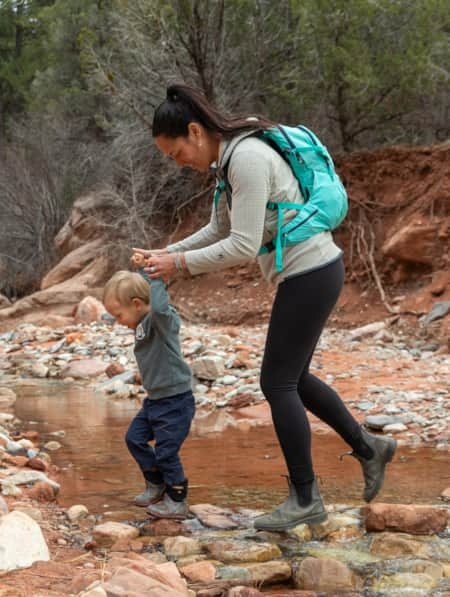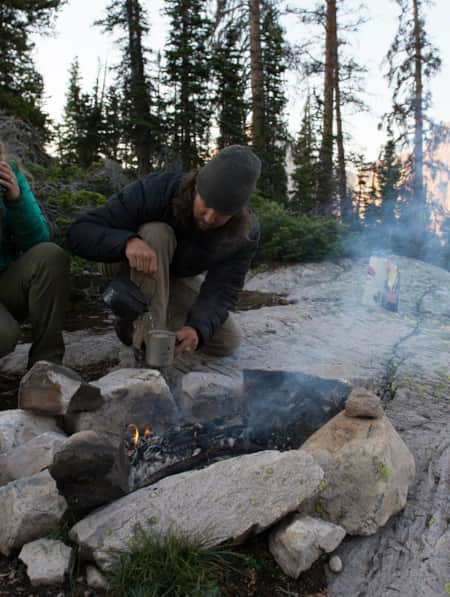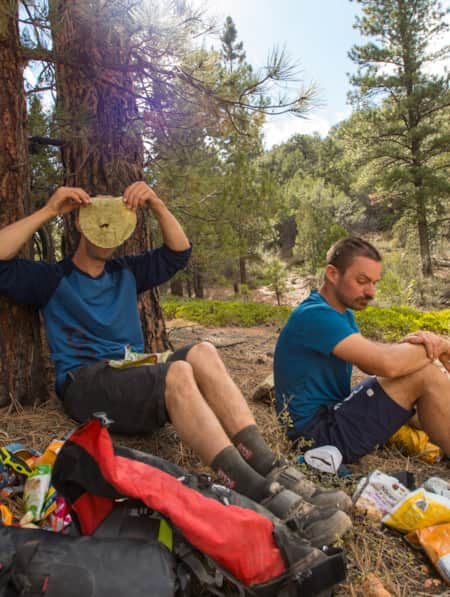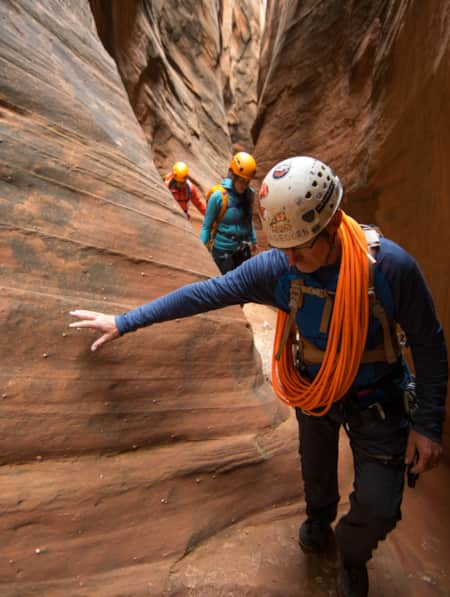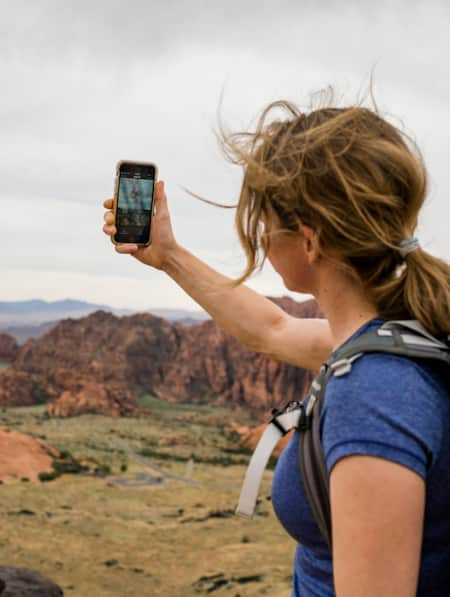Staying Safe: Search and Rescue in Utah
Know how to stay safe and informed during your Utah trip and who is helping when you get into trouble.
The temperatures soar as I gulp back the last remnants of my first of two liters of water on this exceptionally dry summer’s day. After a week of canvassing endless miles of desert and a combined 4,000 volunteer hours, the search had been called off.
Even with a GPS device giving rescuers his last known location, the vastness of the surrounding country proved too complex to home in on his current location. Was he alive?
I saw the message on a Facebook post. The missing man was connected to my greater community and his family and friends sought volunteers as they refused to give up hope. I headed out to help in any way that I could.
Despite the help from volunteers and staff from three sheriff’s offices, local search and rescue (SAR) teams, friends and family, private drones and airplanes, he was still missing. So there I was, a last-minute volunteer, driving and walking nearby mountain ranges with a satellite printout displaying potential spots where the missing man might be.
My 48 hours of searching were fruitless. Most of the points from the satellite turned out to be boulders catching glare off the sun or random tidbits of discarded debris. Like the search and rescue team members the week before, I too headed home.
While this may be an extreme SAR case both in incident and breadth of search, it truly opened my eyes to what can happen when people need to be rescued in the wilderness.

While not everyone is expected to be formally trained in outdoor education, it is important for all visitors to do their part to be safe and informed.

Heading into the Utah backcountry can be a thrilling adventure, but it also requires thorough preparation and care.
Staying Safe in the Outdoors
With the onset of spring comes the opening of Utah’s busy travel season. As people begin to descend on public parks and lands the number of backcountry incidents grows exponentially.
While not everyone is expected to be formally trained in outdoor education, it is important for all visitors, whether experienced Utah outdoor enthusiasts, first-time visitors — or somewhere in between — to do their part to be safe and informed.
Escalante-based guide, outfitter and search and rescue volunteer, Rick Green said it best: “The well-prepared traveler is the person who is going to have the best time, because they're going to have gathered information in advance, they're going to understand the conditions of the place they're going, they're going to understand what's going to be required of them on that day, and they're going to be in a situation where they could help others if they had to.” (Read: Be Prepared for the Backcountry)
And it’s not just the visitors to the rugged wilderness areas of Utah that need to be informed. Even visitors to Utah’s national parks can find themselves in need of aid from time to time: Zion National Park conducted more than 130 SARs in 2021.
“SAR responders are trained to respond to incidents involving canyoneering, climbing and wilderness travel,” says Jonathan Shafer, Zion National Park’s Public Information Officer.
In addition to all the day-to-day work that park employees do, they are often informing visitors on ways to plan ahead and how to always be prepared.
“While we can respond if you need help, your safety is your responsibility,” says Shafer.
“The best kind of SAR is the kind that never happens.”
Recreating in Utah’s parks and monuments is exciting. Visit the state’s visitor education hub and individual park websites to learn more about how to plan ahead and the unique challenges you should be prepared to face within and around the parks.
"The well-prepared traveler is the person who is going to have the best time, because they're going to have gathered information in advance, they're going to understand the conditions of the place they're going, they're going to understand what's going to be required of them on that day, and they're going to be in a situation where they could help others if they had to."
– Rick Green, Escalante-based Guide, Outfitter and Search and Rescue Volunteer
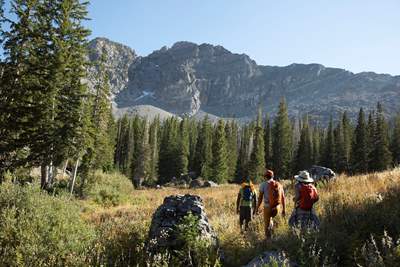
People Do Get Lost
The increase in SAR cases is directly related to the increase in popularity in outdoor recreation and tourism. While locals in these areas are not immune from making mistakes, it’s often people unfamiliar with terrain and weather patterns that find themselves in need of help.
This is a frequent occurrence for the Garfield County Search and Rescue team who monitor the areas surrounding Grand Staircase-Escalante National Monument.
Visitors to any of Utah’s state or national parks may be used to the often ample trails and signage found there. Other areas like the Grand Staircase are true wilderness areas and often lack the same infrastructure.
“You get in the backcountry and not only is it easy to get turned around, but the temperature can make it feel like standing in an oven,” says Garfield County Sheriff Danny Perkins. “We have some [cell] service if people can get on a ridge but most of those slot canyons you can’t even get a satellite phone to work." While some savvy to the backcountry carry SPOT satellite communications devices, some narrow canyons curb their usage as well.
Up north, with backcountry easily accessible from the three major canyons in the Salt Lake Valley, it makes sense that the SAR number is also growing just outside the urban centers.
Though it is called “search and rescue,” in many cases the victims only need one or the other. In Salt Lake County, SAR mostly find themselves involved in the rescue. “We have a lot of cell coverage in the area,” says John Patterson, Salt Lake County SAR Commander. “It’s mostly broken ankles, twisted knees, etc. Many are calling us from their location, they give us that location and we dispatch our rescues.”
When Patterson joined the SAR 15 years ago they were averaging 30 rescues a year. Today, that number has more than doubled.
In an attempt to help people prepare for backcountry travel and keep them safe while out there, the outdoor community as a whole came up with a list of 10 essentials for any backcountry trip. Though travelers should modify their list based on what the adventure entails, the following provides a solid foundation: water, rain gear, extra clothing/insulation, extra food, maps and compass, sun protection, waterproof matches or lighter, flashlight or headlamp, first aid supplies and emergency shelter.
"Visitors to any of Utah’s state or national parks may be used to the often ample trails and signage found there. Other areas like the Grand Staircase are true wilderness areas and often lack the same infrastructure."

In 2019, Utah search and rescue teams launched 582 total missions, aiding backcountry hikers, mountain bikers, snowmobilers and more.

While locals in these areas are not immune from making mistakes, it’s often people unfamiliar with terrain and weather patterns that find themselves in need of help.

While most rescues are relatively straightforward, those involving ground and air searches can exceed tens of thousands of dollars.
Support Those Who Support You
Search and rescue operations are very much a product of the communities and environment they extend from. There are districts like the Salt Lake area that are heavily populated and those like Garfield County whose population is much more sparse. When it comes to SAR this difference means a lot.
“While larger counties like Salt Lake County are well-funded due to a large taxable population base, smaller ones like Grand or Garfield County need the financial support,” says Patterson. Grand County houses Moab and Arches and Canyonlands national parks. All of Utah’s national parks are in remote areas supported by small-town funding and limited volunteer capacity, though local law enforcement and volunteers do the very best they can to serve those in need.
Garfield County Search and Rescue is a fully-volunteered, non-profit arm of the local Sheriff's Office. Their SAR budget is around $30,000 annually which barely covers the gear needed for operations. One of the biggest needs for their SAR is helicopter fuel.
“If we didn’t have that helicopter I don’t know what we would do,” says Sheriff Perkins. With a population of around 5,000, they do what they can to raise funds through events, donations and t-shirt sales.
Donations are invaluable to the search and rescue community but what helps more is being prepared. By being prepared in the backcountry we reduce the need for SAR resources both volunteer and professional.
Another way to offset non-medical fees to both victims of backcountry incidents as well as the state and county rescue crews that help in these incidents is to purchase the USARA card created by the Utah Office of Outdoor Recreation. The overall goal of the card is to provide financial support to Utah SAR. While the average cost of SAR is around $2,000, some missions can cost hundreds of thousands of dollars.
While it is not an insurance card, it may help offset costs associated with items like helicopter rescue and searchers on the ground. The rescued individual will be responsible for all medical costs.
"All of Utah’s national parks are in remote areas supported by small-town funding and limited volunteer capacity, though local law enforcement and volunteers do the very best they can to serve those in need."
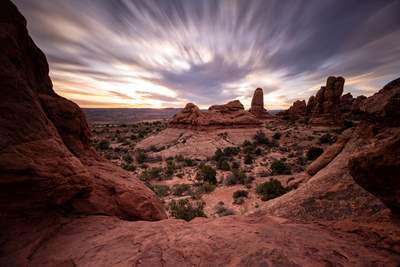
Another great way to support search and rescue volunteers, and to keep yourself safe, is: if in doubt, go with a guide (here’s how to find one). Even the most seasoned backcountry enthusiast can benefit from traveling with a guide. Many of us know the things we know but we can all benefit from becoming more educated. Guides can provide extensive knowledge of flora, fauna and natural history. With all the twists and turns in the Utah landscape there is an added calm when we don't have to think about where your next turn might be. (Read: Perks of Going with a Guide)
“We have a ton of guides,” says Patterson. “It’s the best way. They give you all the real info you need. The biggest downfall with the Information Age is that people will quickly scan sites like Alltrails.com and only take enough information to get themselves into trouble. A guide will actually know information because they have been there and done it before.”
Volunteer Rick Green has a note posted at his Escalante Outfitters office from Joseph Consiglio, whom he helped rescue many years ago. In it, Consiglio asks others to “thank all of those responsible for my outstanding rescue by never underestimating the inherent dangers of outdoor recreation in a wild area.”
When I set out into the desert to help find a missing man, I envisioned hours of searching and eventually finding him. But wilderness areas are often huge and roads don’t always go where you need them to go. Every little bit of knowledge and education can be the difference. “Have all the information you need and you'll have a great time,” says Green.
As Consiglio recommends in his letter: Stay humble, stay grateful and stay safe.


